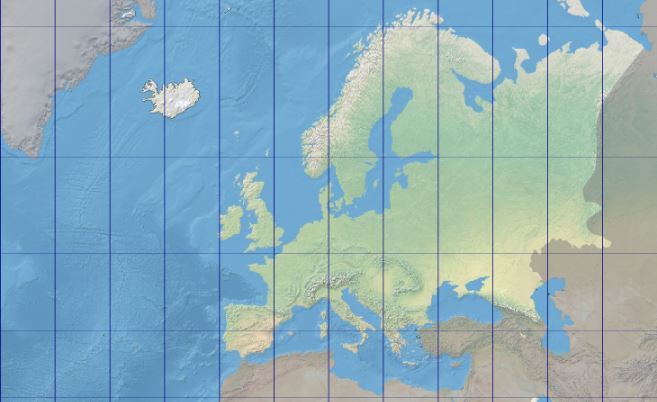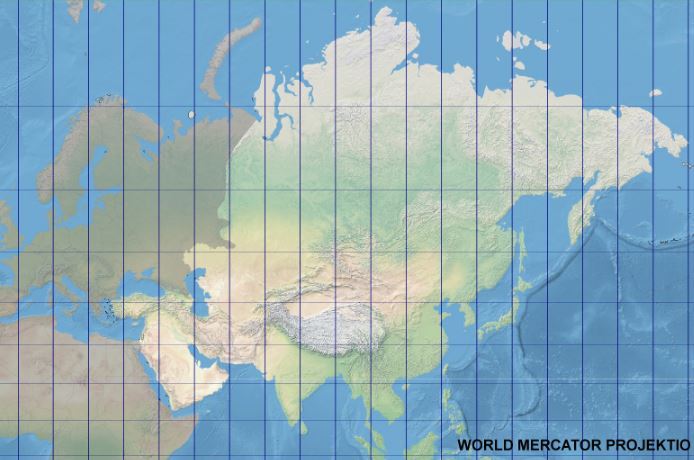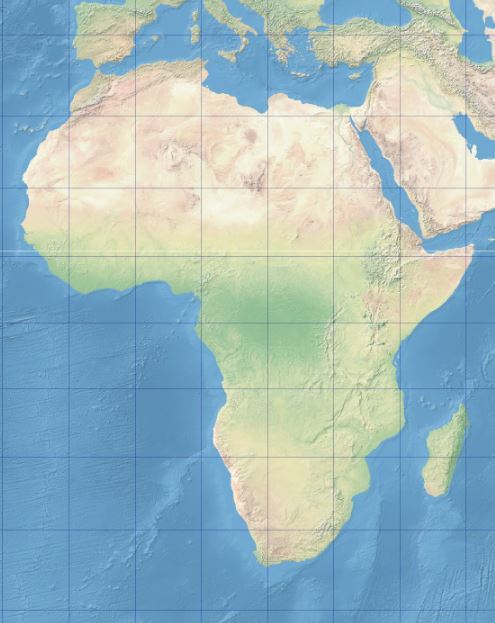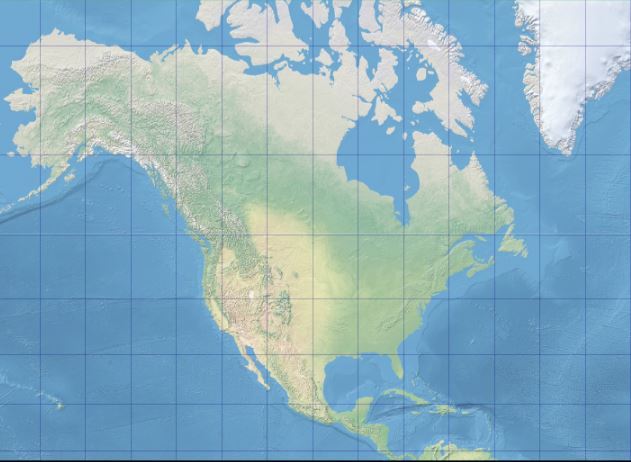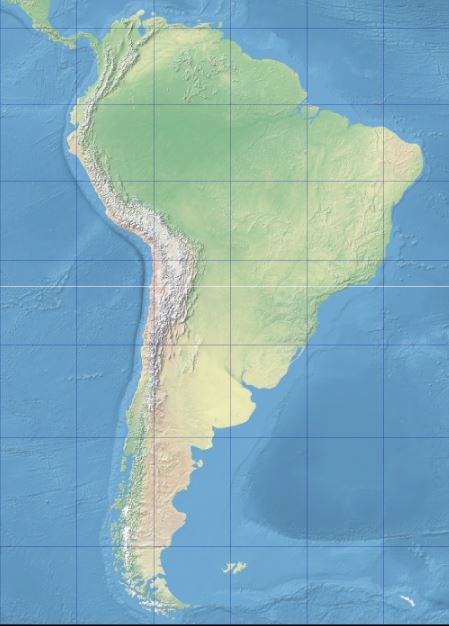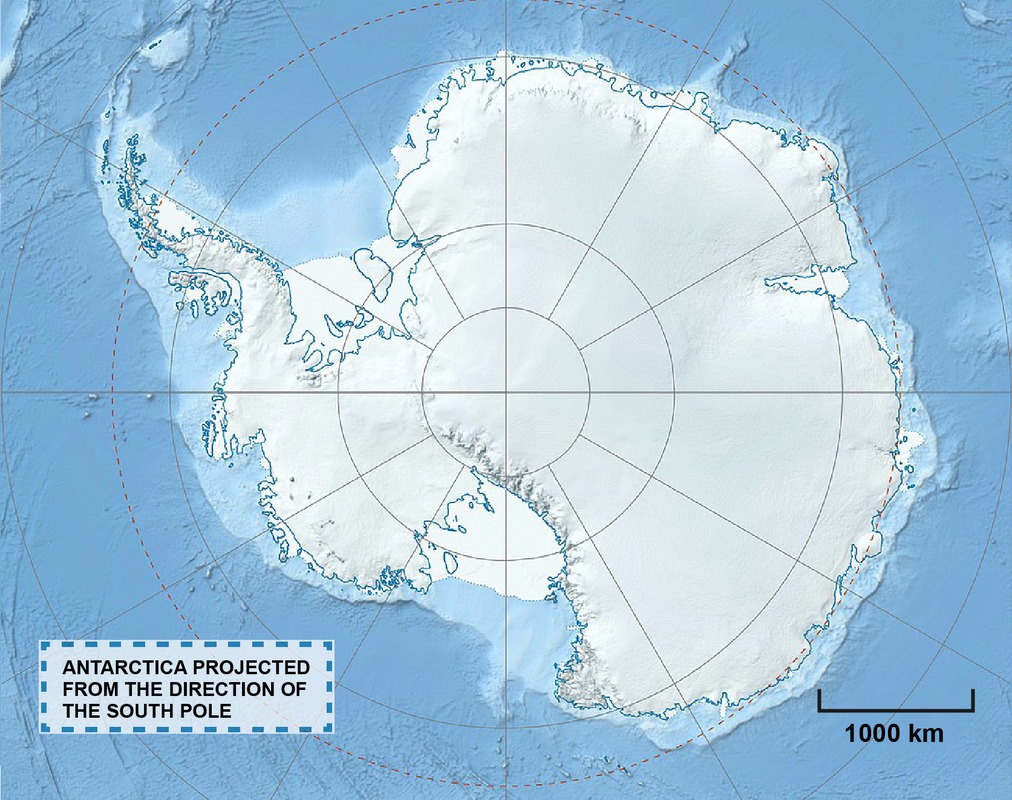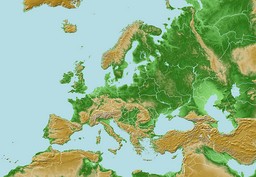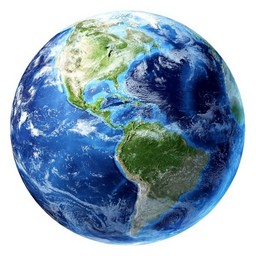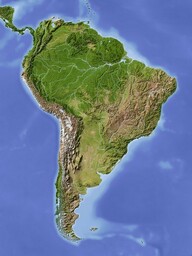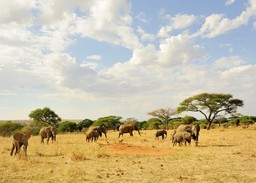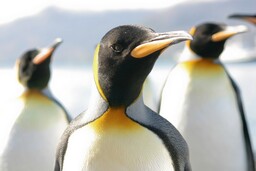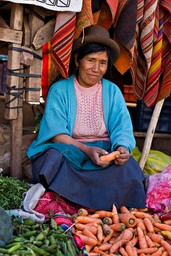5. Oceans and continents
Contents
5.1 Earth is a blue planet
When looking at the Earth from space, the planet seems to be mainly blue. This is due to the fact that approximately 70 % of the Earth's surface area is covered by water. The oceans are the largest bodies of water on the planet. These are the Pacific Ocean, the Atlantic Ocean, the Indian Ocean, and the Arctic and Antarctic Oceans. The large oceans are surrounded by smaller marginal seas and gulfs.
The Pacific Ocean, often simply referred to as the Pacific, encompasses over one third of our planet's total surface area. It has over 25 000 islands, which is more than in all the other oceans combined. The largest archipelago in the Pacific Ocean is Oceania. The Pacific also contains the deepest submarine spot on the planet, the Mariana Trench, which is 10 911 meters deep.The Atlantic and Indian Oceans are almost equal in size. The Atlantic Ocean receives its name from the giant Atlas of Greek mythology, who was said to carry Earth on his shoulders.
The Arctic and Antarctic Oceans can be thought of as extensions of the Atlantic Ocean. The Arctic Ocean is connected to the Pacific Ocean via the Bering Strait.
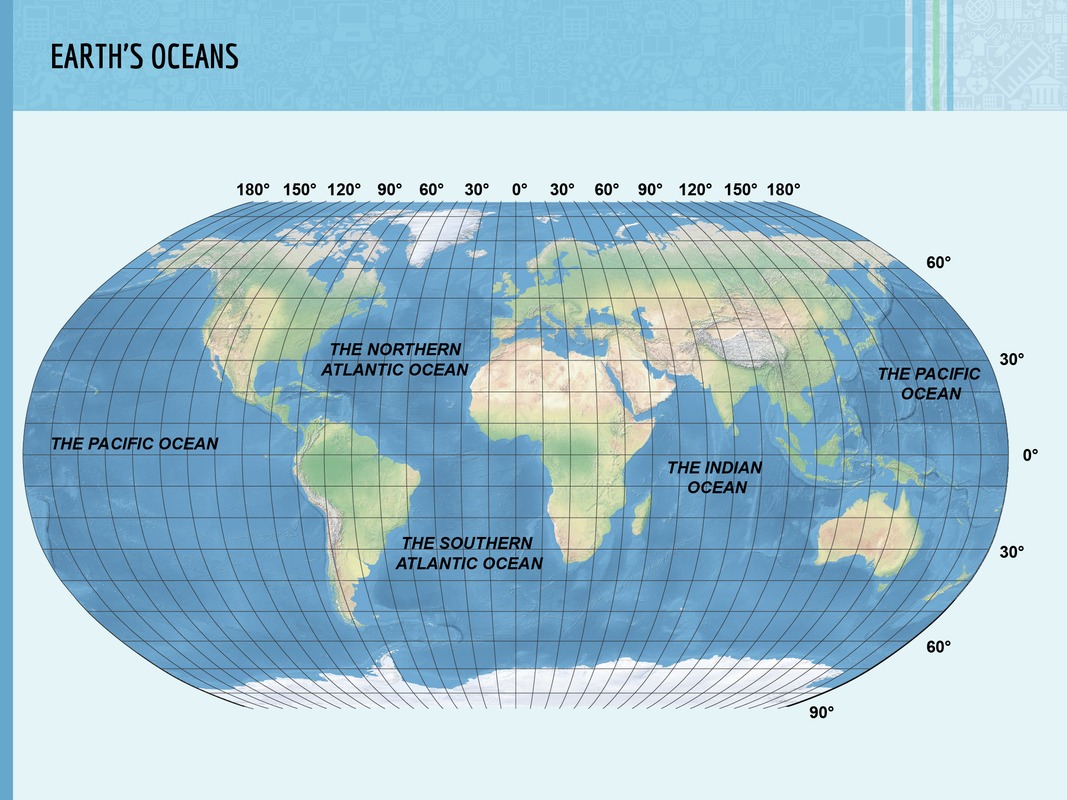
5.2 Continents
The oceans divide planet Earth's land mass into tectonic continents. Our planet has six tectonic continents in total: they are Arfica, Eurasia, North and South America, Australia, and Antarctica. These continents may include inland seas, such as the Baltic Sea, and large islands, such as Greenland, which is actually part of the North American continent. The terms "old continent" and "old world" refer to the continents of Eurasia and Africa, whereas the terms "new continent" or "new world" refer to the two American continents.
The tectonic continents can be divided into smaller segments that are called geographical continents. When talking about continets in everyday speech, we usually talk about geographical continents. The tectonic continent of Eurasia can be divided into two geographical continents: Europe and Asia. The rest of the tectonic continents form their own geographical continents. As a result, the Earth is often said to consist of seven continents, even though it actually has only six tectonic continents.
The continents are divided by mountain ranges (such as the Caucasus, between Europe and Asia), inland seas (such as the Mediterranean, between Europe and Africa), and narrow necks of land (such as those between Africa and Asia, and between North and South America).

Oceans and continents.
The tectonic continents can be divided into smaller segments that are called geographical continents. When talking about continets in everyday speech, we usually talk about geographical continents. The tectonic continent of Eurasia can be divided into two geographical continents: Europe and Asia. The rest of the tectonic continents form their own geographical continents. As a result, the Earth is often said to consist of seven continents, even though it actually has only six tectonic continents.
The continents are divided by mountain ranges (such as the Caucasus, between Europe and Asia), inland seas (such as the Mediterranean, between Europe and Africa), and narrow necks of land (such as those between Africa and Asia, and between North and South America).

Oceans and continents.
5.3 Europe
Europe is the second smallest continent on the planet in terms of its surface area (10,2 million square kilometers), but has the third largest population of all the continents (720 million people).
Europe consists of over 50 countries. During different times in the continent's history, its borders have been defined differently, depending on where the geopolitical power of the continent has been centered. Nowadays, the term "Europe" is mostly used to mean the member states of the European Union.
Europe consists of over 50 countries. During different times in the continent's history, its borders have been defined differently, depending on where the geopolitical power of the continent has been centered. Nowadays, the term "Europe" is mostly used to mean the member states of the European Union.
5.4 Asia
Asia is the largest continent on planet Earth, both in terms of its surface area (44 million square kilometers) and its population (over 4 billion people). Over 60 percent of the planet's total population lives in Asia, and all of the planet's major religions, as well as many important scientific discoveries, have developed on this continent.
China and India are the two most populous nations on Earth. Large parts of the Asian population live on the monsoon zone and receive their livelihood from agriculture. The role of agriculture is important in order to satisfy the large demand for food on the populous continent. The economies of the most developed Asian nations, such as Japan, are centered on various technological industries, such as producing cars, computers, and electronics.
The natural world of the Asian continent is rich is species that are not found anywhere else on the planet. In terms of natural resources, China is among the most richest nations on Earth. The nations of the Middle East and the Arabian peninsula are among the most important oil-producers in the global economy. Mandarin Chinese is the most widely spoken language on the planet.
China and India are the two most populous nations on Earth. Large parts of the Asian population live on the monsoon zone and receive their livelihood from agriculture. The role of agriculture is important in order to satisfy the large demand for food on the populous continent. The economies of the most developed Asian nations, such as Japan, are centered on various technological industries, such as producing cars, computers, and electronics.
The natural world of the Asian continent is rich is species that are not found anywhere else on the planet. In terms of natural resources, China is among the most richest nations on Earth. The nations of the Middle East and the Arabian peninsula are among the most important oil-producers in the global economy. Mandarin Chinese is the most widely spoken language on the planet.
Planet Earth as seen from a weather satellite
| 0:00–1:20 | The satellite is flying over the Indian Ocean. Can you distinguish Africa, the Arabian peninsula, and India? |
| 1:20–2:30 | Can you find Africa and Australia? As the satellite is flying over the equator towards the south, the Sun seems to rise from the left side. |
| 2:30– | Can you notice the cloud zones above the equator and the clear skies over the Sahara desert and the Arabian peninsula? |
5.5 Africa
Africa is planet Earth's second largest continent in terms of its surface area (30 million square kilometers).
The African continent is home to over one billion people (approximately 15 % of Earth's total population). Based on fossil findings and genetic research, it has been discovered that modern humans originated in Eastern Africa.
Africa is rich in natural resources, but poor in terms of economic strength. Many historical difficulties, such as colonialism and the slave trade, have drastically hindered the economic development of the African continent. The effects of these actions are still visible in the socioeconomic conditions on the continent today.
Most African nations became independent from European colonial powers during the 1960s. However, wars, economical instability and population growth remain significant problems on the African continent to this day. Despite these problems, the economic and social conditions in Africa are predicted to develop for the better over the course of the next couple of decades.
The nature of the African continent is rich and varied. Compared to other continents, Africa is home to a particularly large number of large animal species, such as giraffes, hippopotamuses and rhinoceroses.
The African continent is home to over one billion people (approximately 15 % of Earth's total population). Based on fossil findings and genetic research, it has been discovered that modern humans originated in Eastern Africa.
Africa is rich in natural resources, but poor in terms of economic strength. Many historical difficulties, such as colonialism and the slave trade, have drastically hindered the economic development of the African continent. The effects of these actions are still visible in the socioeconomic conditions on the continent today.
Most African nations became independent from European colonial powers during the 1960s. However, wars, economical instability and population growth remain significant problems on the African continent to this day. Despite these problems, the economic and social conditions in Africa are predicted to develop for the better over the course of the next couple of decades.
The nature of the African continent is rich and varied. Compared to other continents, Africa is home to a particularly large number of large animal species, such as giraffes, hippopotamuses and rhinoceroses.
5.6 North America
The surface area of the North American continent is over 25 million square kilometers. It is home to over 515 million people. It is the third largest continent in terms of its surface area, and the fourth largest in terms of its population. The continent of North America consists of 43 nations, when including the island states of the West Indies.
Before the arrival of European colonists during the 16th century, the continent was largely inhabited by a large Native American population. This population was divided into over 300 tribes, which differed from each other in terms of their languages and cultures. The majority of the Native American population vanished as a result of European settlement.
The most significant nation of the North American continent is undoubtedly the United States of America, which is arguably the most influential global power in political, military and economic terms. Its gross domestic product is the largest on the planet. It has been estimated that the United States alone uses up approximately 25 percent of the planet's natural resources.
The border between the North and South American continents has been set on the border between the nations of Panama and Columbia. Therefore, Central America and its archipelago are considered to be part of the North American continent.
Before the arrival of European colonists during the 16th century, the continent was largely inhabited by a large Native American population. This population was divided into over 300 tribes, which differed from each other in terms of their languages and cultures. The majority of the Native American population vanished as a result of European settlement.
The most significant nation of the North American continent is undoubtedly the United States of America, which is arguably the most influential global power in political, military and economic terms. Its gross domestic product is the largest on the planet. It has been estimated that the United States alone uses up approximately 25 percent of the planet's natural resources.
The border between the North and South American continents has been set on the border between the nations of Panama and Columbia. Therefore, Central America and its archipelago are considered to be part of the North American continent.
5.7 South America
The surface area of the South American continent is 17 million square kilometers. The population of South America is approximately 390 million. It is the fourth largest continent in terms of surface area. It consists of only 12 nations, as well as the French territory of Guyana.
At the time of European settlement during the 16th century, the native Inca and Aztec cultures were truly advanced civilizations. These civilizations suffered at the hands of their new European neighbors. European explorers brought many important food crops from South America to Europe. These crops included tomato, maize and potato.
South America is home to a varied and rich animal population. The Amazon rainforest contains a staggering diversity of plant and animal species. The rich plant and animal life of the continent is used as a powerful tool in attracting tourists to South America. In fact, tourism is quickly developing into one of the most important domains of the continent's economy.
At the time of European settlement during the 16th century, the native Inca and Aztec cultures were truly advanced civilizations. These civilizations suffered at the hands of their new European neighbors. European explorers brought many important food crops from South America to Europe. These crops included tomato, maize and potato.
South America is home to a varied and rich animal population. The Amazon rainforest contains a staggering diversity of plant and animal species. The rich plant and animal life of the continent is used as a powerful tool in attracting tourists to South America. In fact, tourism is quickly developing into one of the most important domains of the continent's economy.
5.8 Australia
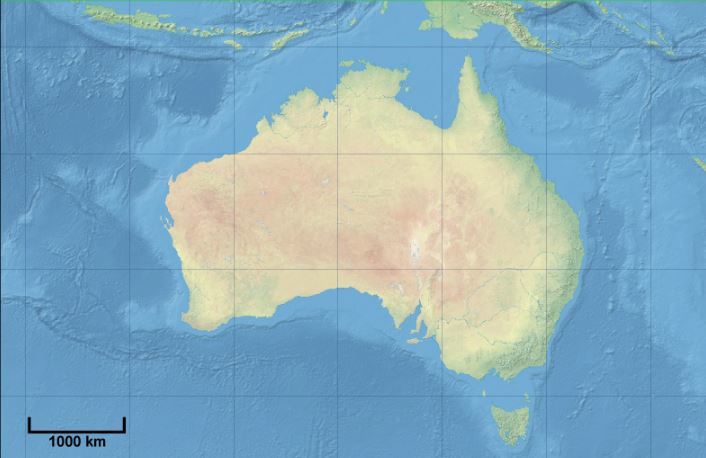 The name of the Australian continent comes from the Latin word "australis", meaning "southern". The surface area of Australia is 7,7 million square kilometers, and its population is 23 million. It is both a tectonic continent, a geographical continent and a nation. Australia was first inhabited over 50 000 years ago. The Native Australians, the aboriginals, are descendants of these settlers.
The name of the Australian continent comes from the Latin word "australis", meaning "southern". The surface area of Australia is 7,7 million square kilometers, and its population is 23 million. It is both a tectonic continent, a geographical continent and a nation. Australia was first inhabited over 50 000 years ago. The Native Australians, the aboriginals, are descendants of these settlers. Australia is located entirely on the Southern Hemisphere. Because Australia is isolated from all the other continents, its flora and fauna have developed in an unique direction. The continent is home to various plant and animal species that are not found anywhere else on Earth. It has been estimated that only one third of all Australian species have been discovered. The animal life of the continent is characterized by the prominence of marsupials, such as kangaroos, koalas and wombats.
Because the Australian continent also includes the islands of Oceania, the continent is sometimes called Australia and Oceania.
5.9 Antarctica
Antarctica is the southernmost continent of planet Earth. It is also the only continent with no permanent habitation or nations.
Antarctica is the coldest, windiest and most arid continent. It is the fifth largest continent on the planet, with a surface area of approximately 14 million square kilometers.
The Antarctic continent is almost entirely covered by a large continental glacier. Although the continent has no permanent inhabitants, it is home to over 5 000 researchers at a time. The flora and fauna of the Antarctic have adapted to extremely cold conditions. The most famous of these species is the emperor penguin.
Antarctica experiences extreme weather conditions. The lowest recorded temperature on the continent is -89,2 degrees Celsius, whereas the highest wind speed has been recorded at 320 km/h.
Antarctica is the coldest, windiest and most arid continent. It is the fifth largest continent on the planet, with a surface area of approximately 14 million square kilometers.
The Antarctic continent is almost entirely covered by a large continental glacier. Although the continent has no permanent inhabitants, it is home to over 5 000 researchers at a time. The flora and fauna of the Antarctic have adapted to extremely cold conditions. The most famous of these species is the emperor penguin.
Antarctica experiences extreme weather conditions. The lowest recorded temperature on the continent is -89,2 degrees Celsius, whereas the highest wind speed has been recorded at 320 km/h.
Satellite images and maps
The gallery contains at least two photographs from every continent. Can you identify the continents?
Summary
- Approximately 70 percent of the Earth's surface is covered by water.
- Oceans: the Pacific Ocean, the Atlantic Ocean, and the Indian Ocean.
- Oceans divide the land mass of planet Earth into tectonic continents.
- Tectonic continents: Eurasia, Africa, North and South America, Australia, and Antarctica.
- Tectonic continents can be divided into geographic continents.
- Geographic continents: Europe, Asia, Africa, South America, North America, Australia, and Antarctica.
- Continents are separated from each other by mountain ranges, inland seas and necks of land.
- Key words: oceans, continents.
